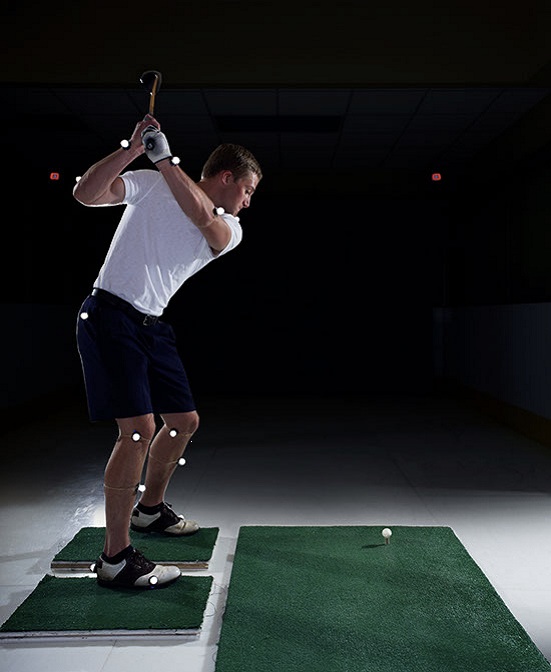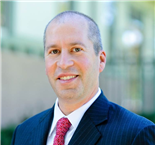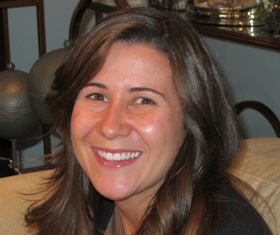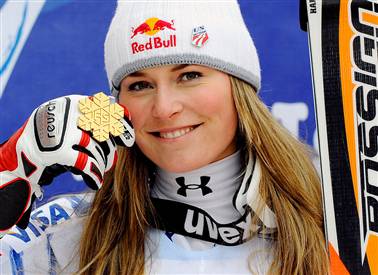New High-Tech Laboratories at the Steadman Philippon Research Institute in Vail, Colorado to Offer New Treatments Into Orthopedic Joint Preservation
The world-class, multi-million dollar research facility for orthopedic studies is pioneering joint preservation and reconstruction techniques
VAIL, CO. (Sept 14, 2011) — The Steadman Philippon Research Institute (SPRI), a world leader in sports medicine research and education, has completed construction of its multi-million dollar, state-of-the-art Biomechanics Laboratories and Surgical Skills facilities. This high-tech research space has been the vision of the Institute for more than two decades. The principal goal for these world-class and unparalleled research facilities is to understand the demands and injuries on joints for certain sports or motions, how these injuries occur and how they can be best treated, and to offer SPRI Fellows, Visiting Scholars and physicians the ability to practice current and new surgical techniques in an OR-like environment.
The principal goal for these world-class and unparalleled research facilities is to understand the demands and injuries on joints for certain sports or motions, how these injuries occur and how they can be best treated, and to offer SPRI Fellows, Visiting Scholars and physicians the ability to practice current and new surgical techniques in an OR-like environment.
SPRI's ongoing research on the hip, ankle, hand, elbow, shoulder and knee has significantly impacted the treatment of joint disorders worldwide. Patients with severe or complex injuries and those with degenerative joint disease, osteoarthritis, advanced arthritis and other debilitating orthopedic conditions, look to SPRI for the innovative treatments developed by the Institute's world-class scientists and Steadman Clinic physicians conducting research in biomechanics and other fields.
Vail Valley Medical Center, a long-term supporter of the Institute, partnered with SPRI in the endeavor. “We are very appreciative of their support and help in building this new laboratory,” remarked Dr. Richard Steadman, Chairman and founder of SPRI. “This new research facility will help us continue our role as a world leader in validating new surgical procedures and in understanding injury mechanisms and injury prevention.”
Located at the base of Vail Mountain, in the Vail Valley Medical Center, these facilities host three specific areas: a BioMotion Laboratory for analyzing how the body moves, a Biomechanical Testing Laboratory with robotics equipment, and a Surgical Skills Laboratory, for use by surgeons to demonstrate techniques and to train Fellows at the Institute. BioMotion Laboratory
BioMotion Laboratory
Inside the BioMotion Laboratory, staff scientists and engineers have constructed an artificial ice-rink for studying injuries to the hip, for example, which are common in hockey players. Researchers will be able to accurately measure body rotation and function during live action by athletes that may contribute to these injuries. The floor of the rink has been constructed so that it can be changed over to different surfaces for other sports such as baseball, soccer, golf and football.
Expanded Surgical Skills Laboratory
The expanded Surgical Skills Laboratory is used for teaching. This flexibly configured environment is equipped with 10 fully equipped state-of-the-art arthroscopy training stations for visiting scholars, Fellows, and clinicians. A meeting and classroom conference center, with audio/visual capabilities completes the center, offering an impressive venue for ongoing future Medical Education training programs. This laboratory promises to benefit orthopedists and patients worldwide by facilitating the development, enhancement and training of techniques that allow patients to keep their own joints while maintaining their desired activity levels for as long as possible.
Newly Integrated X-Ray Laboratory
The integrated dynamic x-ray section of the BioMotion Laboratory houses some highly advanced technologies not yet used by the orthopedic industry including dual-plane fluoroscopy technology. This is two x-ray machines working in concert to shoot x-ray movies, rather than still shots, at rates up to 1,000 images per second. This allows the researchers to analyze highly-accurate, three-dimensional joint motion. There are only a handful of this type of systems in the world right now.
Biomechanics Testing Laboratory Featuring KUKA Robotics Testing Robot
The Biomechanical Testing Laboratory utilizes a robot manufactured by KUKA Robotics, specifically developed to meet the Institute's specifications. Using this novel technology, the team is able to test joints in a manner that will enhance and validate joint preservation and reconstruction techniques, thereby developing new alternatives for joint replacement.
The Biomechanics Research Department is run under Director and Senior Staff Scientist, Coen A. Wijdicks, Ph.D. The BioMotion Laboratory division is directed by Senior Staff Scientist , Erik Giphart, Ph.D., and the Surgical Skills Laboratory is managed by Kelly Adair. The mission of the Biomechanics Research Department is to advance patient care by focusing on injury mechanisms and prevention, development and validation of novel surgical treatments and rehabilitation techniques, and teaching advanced research protocols using state of the art biomechanical research techniques and technologies.
More information can be found at www.sprivail.org.
###
About The Steadman Philippon Research Institute
The Steadman Philippon Research Institute (SPRI) is dedicated to keeping people of all ages physically active through orthopaedic research and education in arthritis, healing, rehabilitation, and injury prevention. Founded in 1988 by orthopaedic surgeon Dr. Richard Steadman as the Steadman Sports Medicine Foundation, the 501(c)(3) charitable organization has influenced the practice of orthopedics throughout the world. Based in Vail, Colorado, it has become one of the most published organizations in sports medicine research and education.

SPRI's ongoing research on the hip, ankle, hand, elbow, shoulder and knee has significantly impacted the treatment of joint disorders worldwide. Patients with severe or complex injuries and those with degenerative joint disease, osteoarthritis, advanced arthritis and other debilitating orthopedic conditions, look to SPRI for the innovative treatments developed by the Institute's world-class scientists and Steadman Clinic physicians conducting research in biomechanics and other fields.
Vail Valley Medical Center, a long-term supporter of the Institute, partnered with SPRI in the endeavor. “We are very appreciative of their support and help in building this new laboratory,” remarked Dr. Richard Steadman, Chairman and founder of SPRI. “This new research facility will help us continue our role as a world leader in validating new surgical procedures and in understanding injury mechanisms and injury prevention.”
Located at the base of Vail Mountain, in the Vail Valley Medical Center, these facilities host three specific areas: a BioMotion Laboratory for analyzing how the body moves, a Biomechanical Testing Laboratory with robotics equipment, and a Surgical Skills Laboratory, for use by surgeons to demonstrate techniques and to train Fellows at the Institute.

Inside the BioMotion Laboratory, staff scientists and engineers have constructed an artificial ice-rink for studying injuries to the hip, for example, which are common in hockey players. Researchers will be able to accurately measure body rotation and function during live action by athletes that may contribute to these injuries. The floor of the rink has been constructed so that it can be changed over to different surfaces for other sports such as baseball, soccer, golf and football.
Expanded Surgical Skills Laboratory
The expanded Surgical Skills Laboratory is used for teaching. This flexibly configured environment is equipped with 10 fully equipped state-of-the-art arthroscopy training stations for visiting scholars, Fellows, and clinicians. A meeting and classroom conference center, with audio/visual capabilities completes the center, offering an impressive venue for ongoing future Medical Education training programs. This laboratory promises to benefit orthopedists and patients worldwide by facilitating the development, enhancement and training of techniques that allow patients to keep their own joints while maintaining their desired activity levels for as long as possible.
Newly Integrated X-Ray Laboratory
The integrated dynamic x-ray section of the BioMotion Laboratory houses some highly advanced technologies not yet used by the orthopedic industry including dual-plane fluoroscopy technology. This is two x-ray machines working in concert to shoot x-ray movies, rather than still shots, at rates up to 1,000 images per second. This allows the researchers to analyze highly-accurate, three-dimensional joint motion. There are only a handful of this type of systems in the world right now.
Biomechanics Testing Laboratory Featuring KUKA Robotics Testing Robot
The Biomechanical Testing Laboratory utilizes a robot manufactured by KUKA Robotics, specifically developed to meet the Institute's specifications. Using this novel technology, the team is able to test joints in a manner that will enhance and validate joint preservation and reconstruction techniques, thereby developing new alternatives for joint replacement.
The Biomechanics Research Department is run under Director and Senior Staff Scientist, Coen A. Wijdicks, Ph.D. The BioMotion Laboratory division is directed by Senior Staff Scientist , Erik Giphart, Ph.D., and the Surgical Skills Laboratory is managed by Kelly Adair. The mission of the Biomechanics Research Department is to advance patient care by focusing on injury mechanisms and prevention, development and validation of novel surgical treatments and rehabilitation techniques, and teaching advanced research protocols using state of the art biomechanical research techniques and technologies.
More information can be found at www.sprivail.org.
###
About The Steadman Philippon Research Institute
The Steadman Philippon Research Institute (SPRI) is dedicated to keeping people of all ages physically active through orthopaedic research and education in arthritis, healing, rehabilitation, and injury prevention. Founded in 1988 by orthopaedic surgeon Dr. Richard Steadman as the Steadman Sports Medicine Foundation, the 501(c)(3) charitable organization has influenced the practice of orthopedics throughout the world. Based in Vail, Colorado, it has become one of the most published organizations in sports medicine research and education.
![]() 0 Comments on "New High-Tech Laboratories at the Steadman Philippon Research Institute in Vail, Colorado to Offer New Treatments Into Orthopedic Joint Preservation"
0 Comments on "New High-Tech Laboratories at the Steadman Philippon Research Institute in Vail, Colorado to Offer New Treatments Into Orthopedic Joint Preservation"
Be the first to comment below.


 Vail Town Council to weigh new plan to redevelop T...
Vail Town Council to weigh new plan to redevelop T...  All about indexes
All about indexes  Transforming your social security into a winning r...
Transforming your social security into a winning r...  Pass sales, real estate transactions, revenues inc...
Pass sales, real estate transactions, revenues inc...  Vail Valley native with passion for Biophilic inte...
Vail Valley native with passion for Biophilic inte...  Beaver Creek starts work on new summer activities
Beaver Creek starts work on new summer activities  Land Trust, ECO Trails, Vail Resorts team up to cl...
Land Trust, ECO Trails, Vail Resorts team up to cl...  EUROVISION named Host Broadcaster for 2015 World A...
EUROVISION named Host Broadcaster for 2015 World A...  Vail Resorts brings back Lindsey Vonn's 'School of...
Vail Resorts brings back Lindsey Vonn's 'School of...  Hundreds turn out for 2015 World Championships vol...
Hundreds turn out for 2015 World Championships vol...  Eagle County Senior Health Expo and 9th Annual Hea...
Eagle County Senior Health Expo and 9th Annual Hea...  Final race of Vail Mountain Trail Running Series s...
Final race of Vail Mountain Trail Running Series s...  Before you write your will ...
Before you write your will ...  2015 World Ski Championships volunteer recruitment...
2015 World Ski Championships volunteer recruitment...  Ascent Sotheby’s International Realty in Vail an...
Ascent Sotheby’s International Realty in Vail an...  CDOT outlines road closures for local stages of US...
CDOT outlines road closures for local stages of US...  Italian artist creates unique trophies for Vail, B...
Italian artist creates unique trophies for Vail, B...  Vail Recreation District once again hosting Jake W...
Vail Recreation District once again hosting Jake W... 

